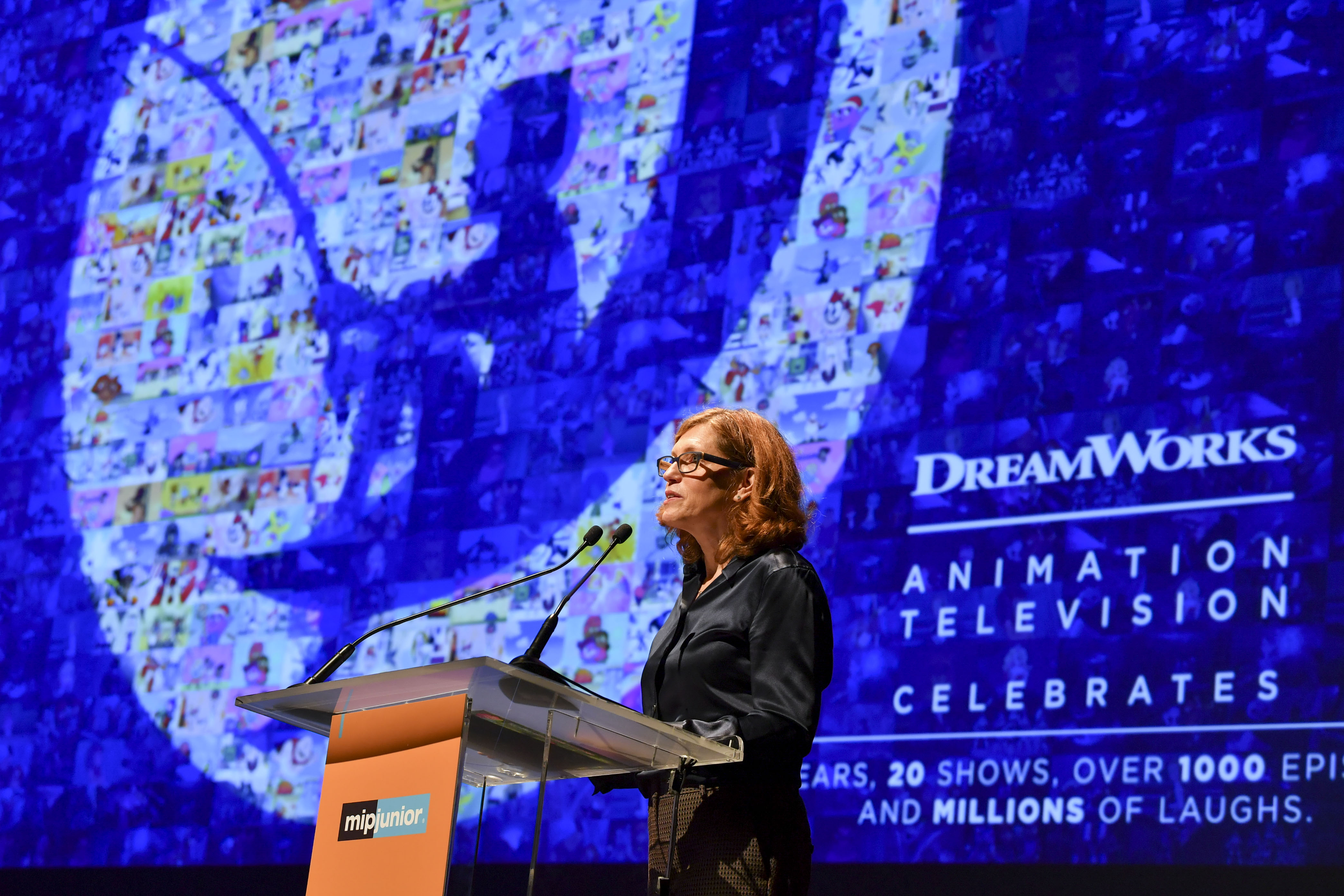DreamWorks Animation TV Chief Margie Cohn Talks Female Superheroes, Streaming Pros and Cons
By Cynthia Littleton
LOS ANGELES (Variety.com) – CANNES — DreamWorks Animation Television caught the streaming wave early and has built a bustling studio thanks to the high demand for kid-centric programs from Netflix, Amazon and Hulu.
DreamWorks Animation Television president Margie Cohn detailed the company’s rapid expansion during the past five years during her keynote address Sunday at the Mip Junior conference, held in Cannes one day before the international TV community gathers here for the annual Mipcom sales conference.
DWA Television had all of five employees at the time the company signed a mammoth multi-series deal with Netflix in 2013, Cohn said. Today it employs about 800 people. Getting the company up to speed quickly forced Cohn and her team to consider everything they liked and didn’t like about the production experience in the past.
“The ability to create everything from the ground up and do it the right way — it was like a gift,” Cohn said during the Q&A moderated by World Screen’s Anna Carugati.
The Netflix partnership called for DWA Television to deliver some 300 hours of animated programming. Cohn recalled thinking at the time “there was about a 50% chance this isn’t going to work,” she said. “We had a short timeline to build a production pipeline. We did everything running.”
Working in the streaming arena offered significant benefits over the traditional linear model. Netflix not only ordered multiple series but made multiple season commitments, which helped them with long-term planning, Cohn said.
“This not only gave us a pipeline — it meant there would be no renewal anxiety,” she said. It also allowed animators and writers to carefully plot stories and character arcs through what Cohn termed “storymapping — telling complete, layered and immersive stories.”
Cohn said DWA Television sought to find some shows that fell outside the two dominant realms of animated series programming — edgy adult-oriented series a la “Family Guy” or strictly kidvid fare. “Some of our programming existed outside of those boxes,” Cohn said. “We wanted to create good shows, period.”
The challenge of introducing kids shows on Netflix was compounded by the fact that the competition wasn’t just programming on rival networks. It’s the vast archive of shows that are now readily available via on-demand platforms. “We’re competing with 10 years to ‘SpongeBob’ and 30 years of ‘The Simpsons,’ “ Cohn observed. “As far as an eight-year-old is concerned, those are new shows.”
Cohn also noted that the lack of ratings pressure for streaming shows has fostered a collegial environment among DWA Television showrunners. “Suddenly there were no more report cards, just the imperitive to produce the best shows we could,” Cohn said. DWA Teleivision’s 2015 Emmy win for one of its first shows — Netflix’s “All Hail King Julien,” revolving around a character from the “Madagascar” film franchise — was an enormous lift for the then-fledgling organization, Cohn said.
Two recent initiatives for DWA Television have been shows with female superhero characters and shows for the pre-school set.
“She-Ra: Princess of Power” is set to bow Nov. 16 on Netflix. Cohn said the production team did extensive research to determine the best approach to tailoring a superhero for girls in a reboot of the classic She-Ra character. “It’s very different than taking a boy action show and slapping a girl in the middle,” she said.
The feedback from “She-Ra’s” target audience was clear. A female crusader had to have several essential qualities including: “doing the right thing, being a good friend, being smart and sassy, having good hair — that’s still very important — and being a good friend,” Cohn said. “Their idea of the most glamorous, perfect superhero was Beyonce. She has amazing hair and she controls her world.”
One of Cohn’s goals for the coming years is to field a successful consumer products strategy. Having shows strictly in an on-demand platform makes it tougher to marshal the attention for a specific property that can drive ancillary sales.
“We’re looking at how to pop a consumer products hit off of a streaming platform,” Cohn said. “The thing that a linear network has always been able to do is to make something feel important. They can do specials and create events. It’s not the same environment” in streaming, she said. “But the streaming services are definitely hugely popular and offer an amazing product. It’s going to happen.”

